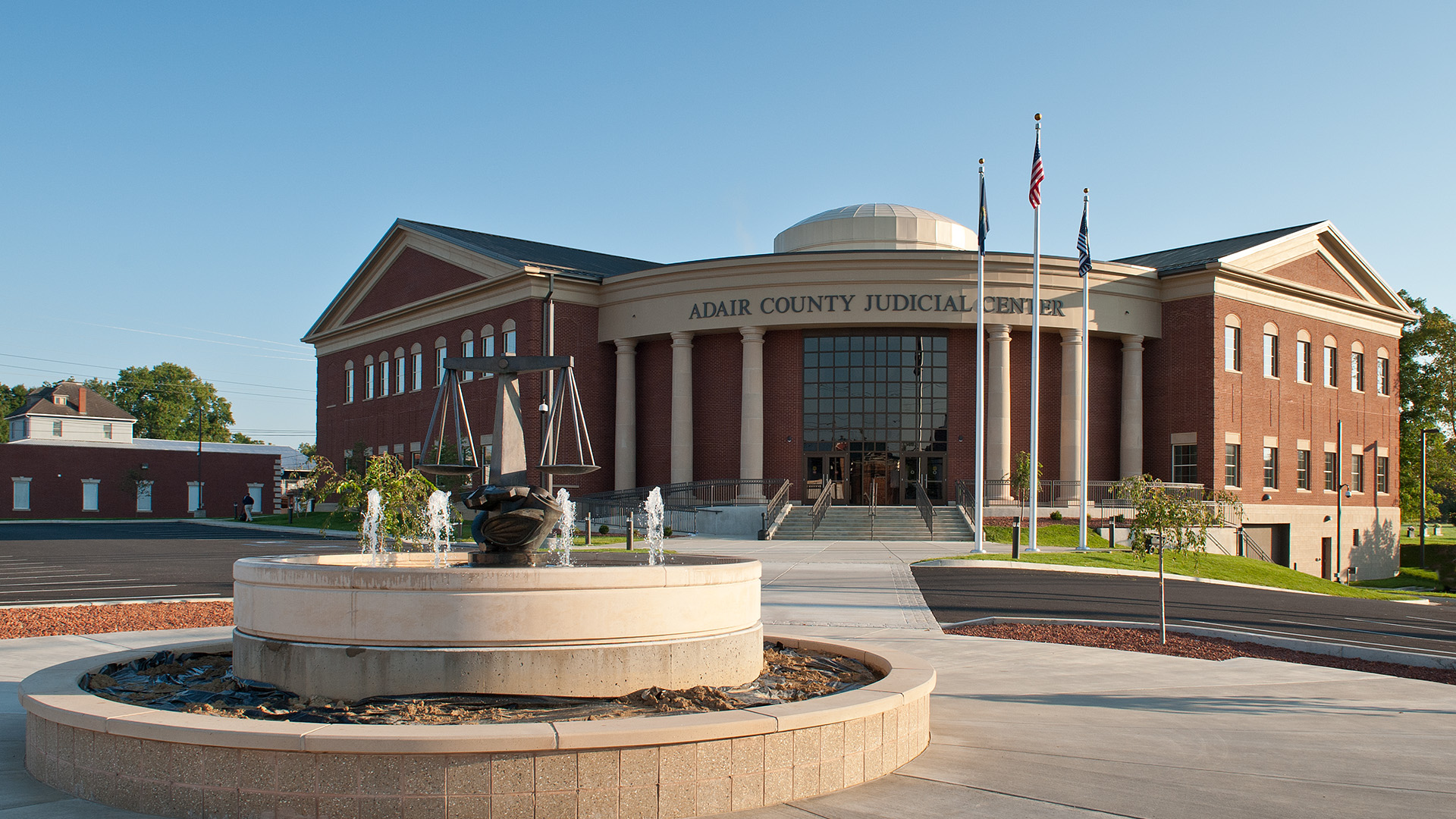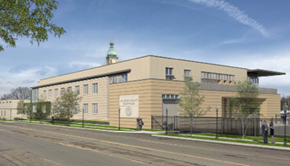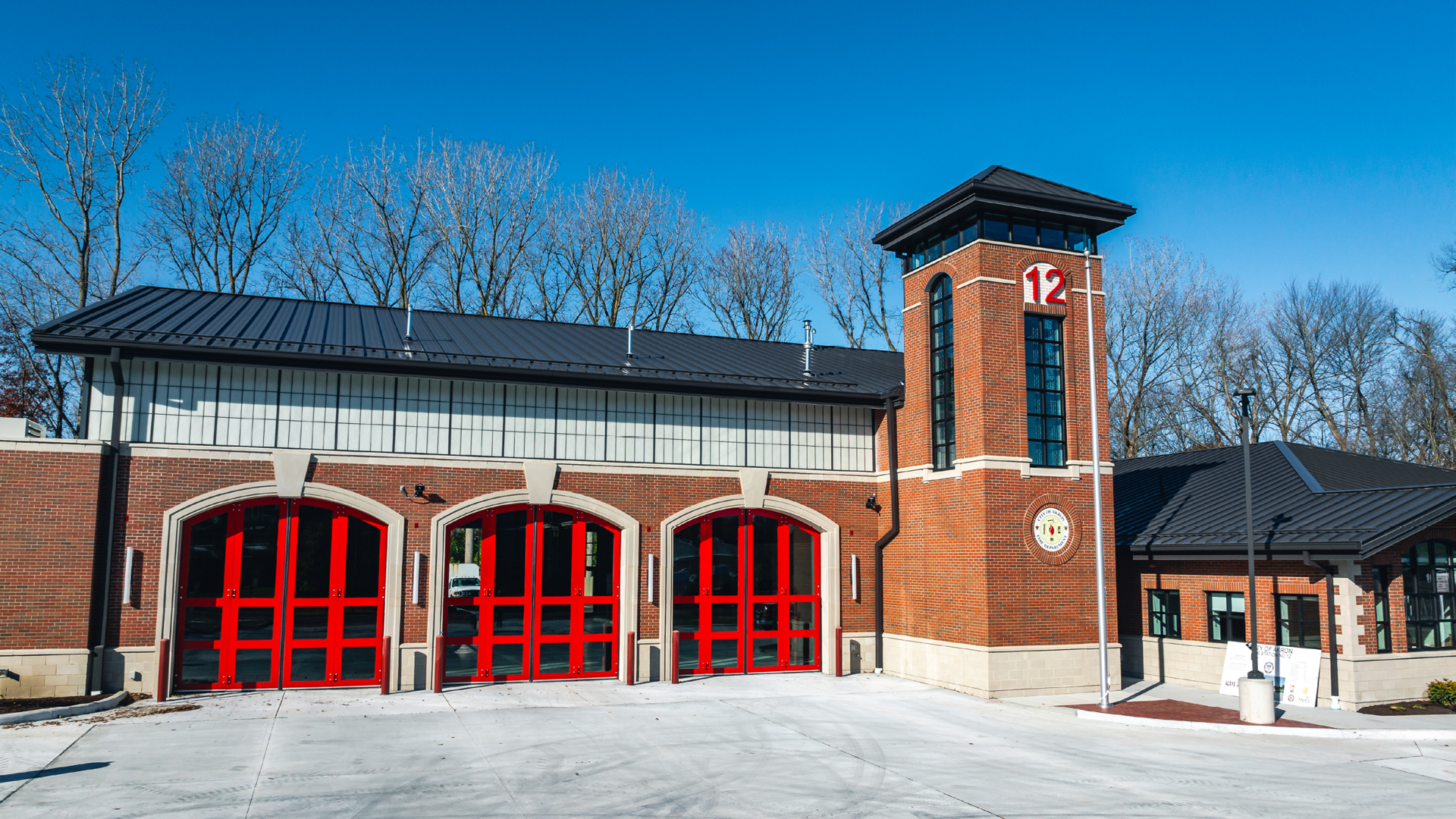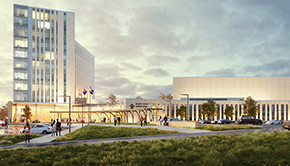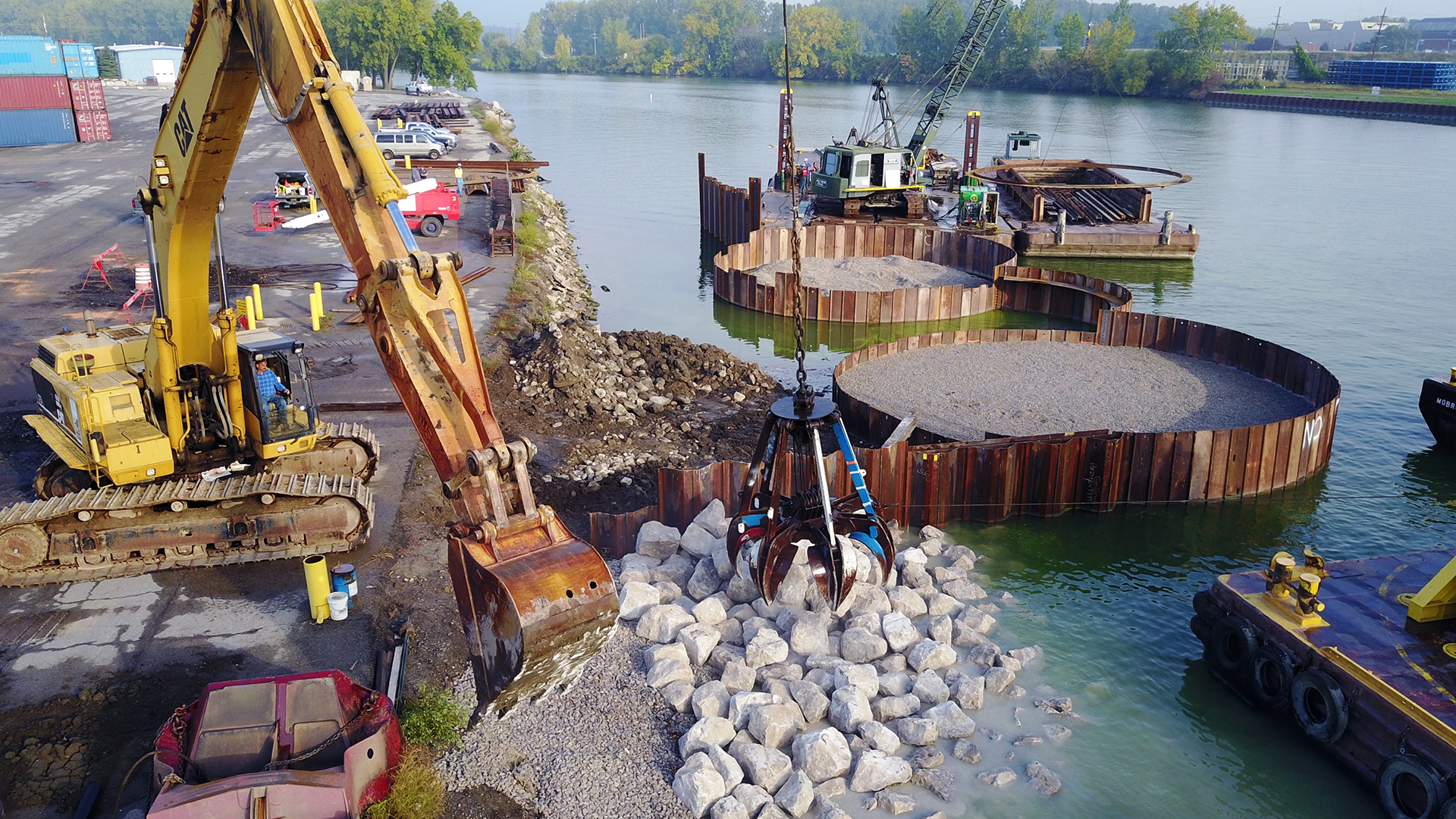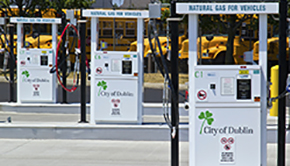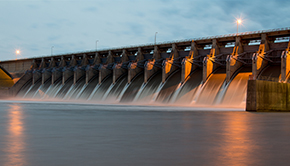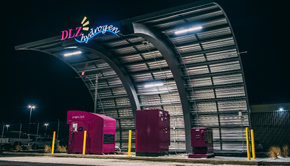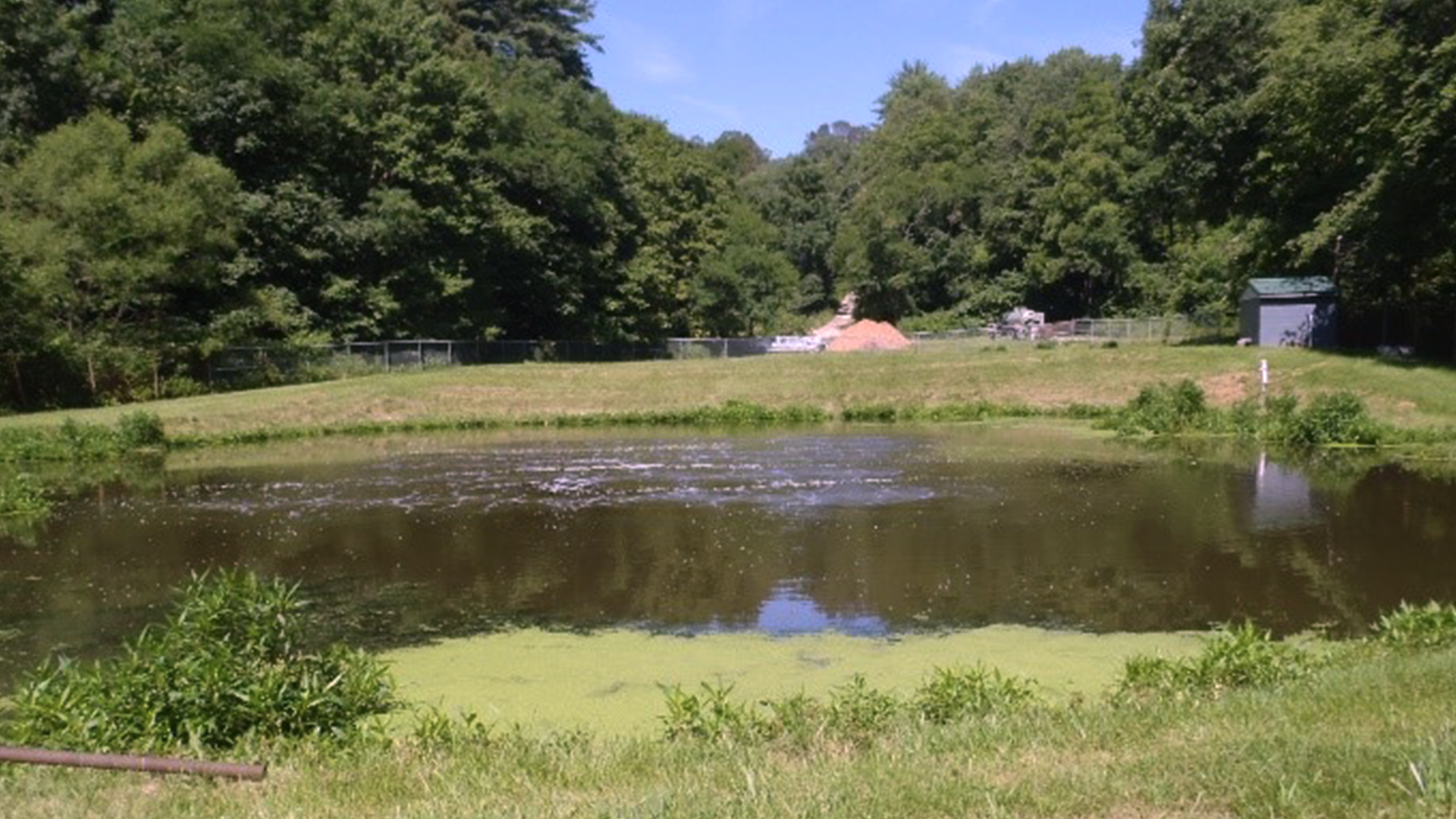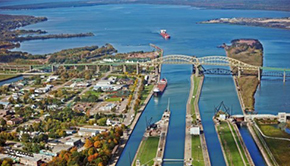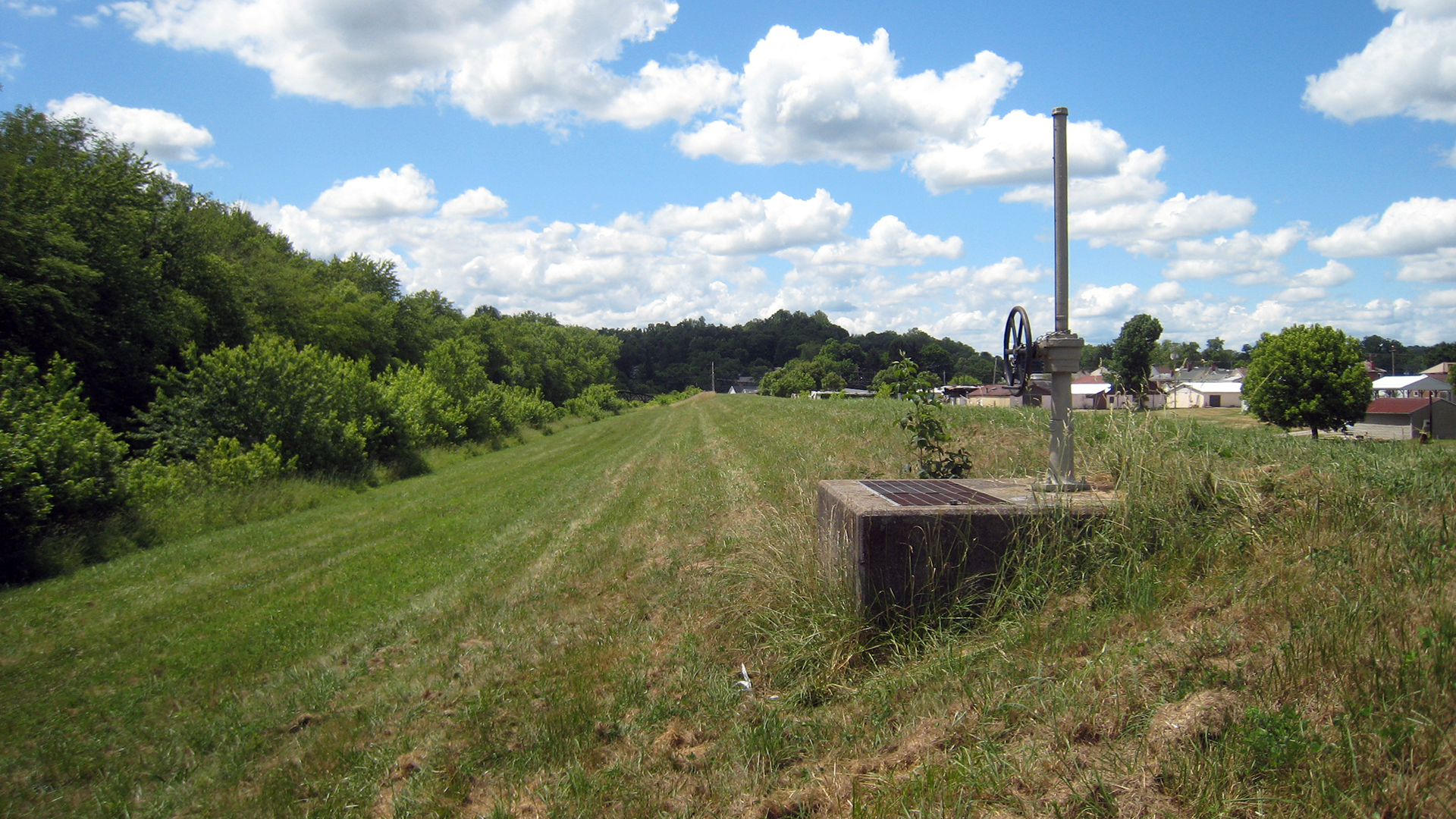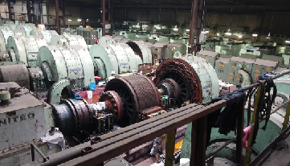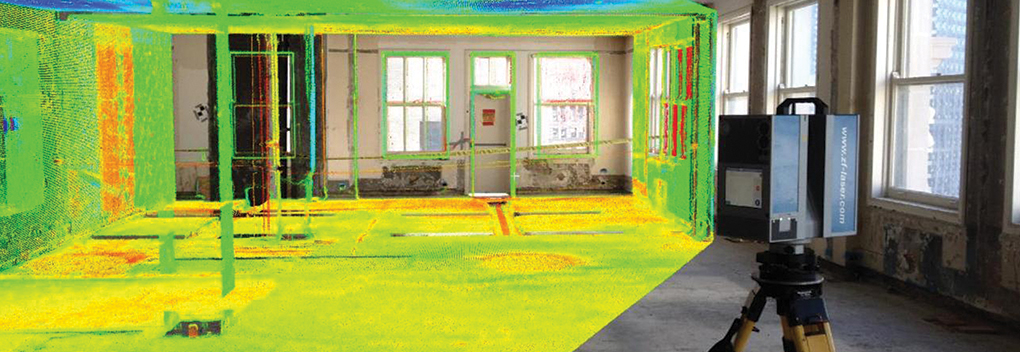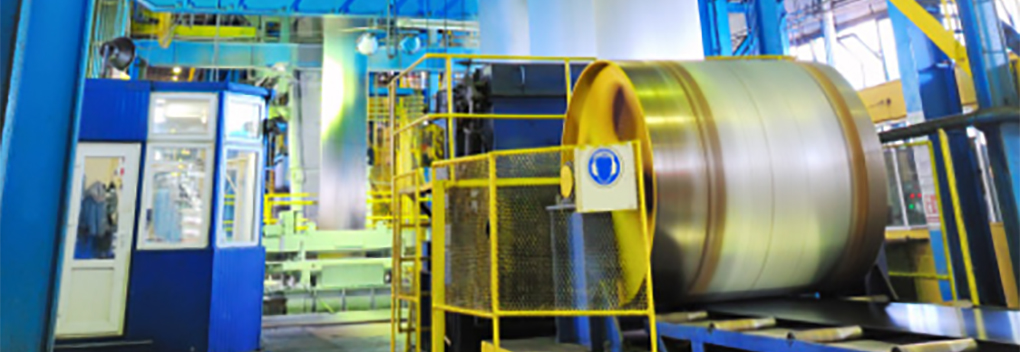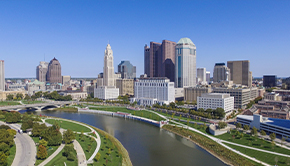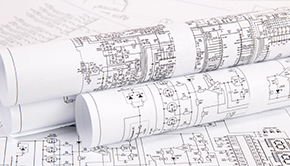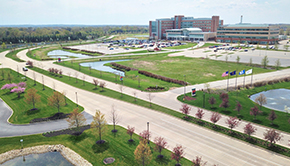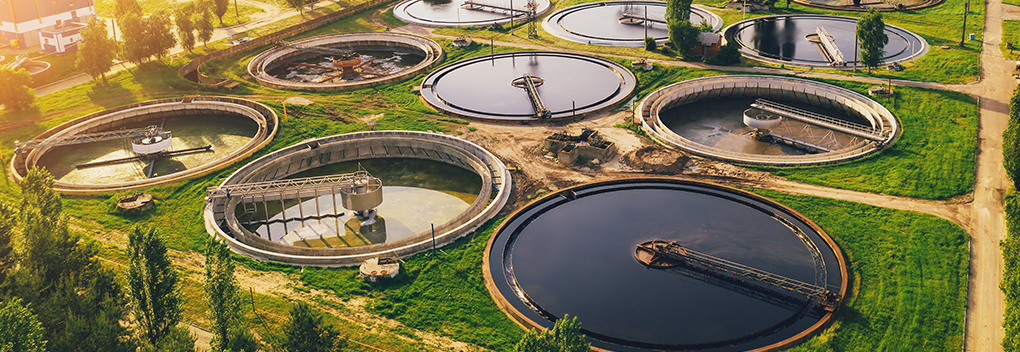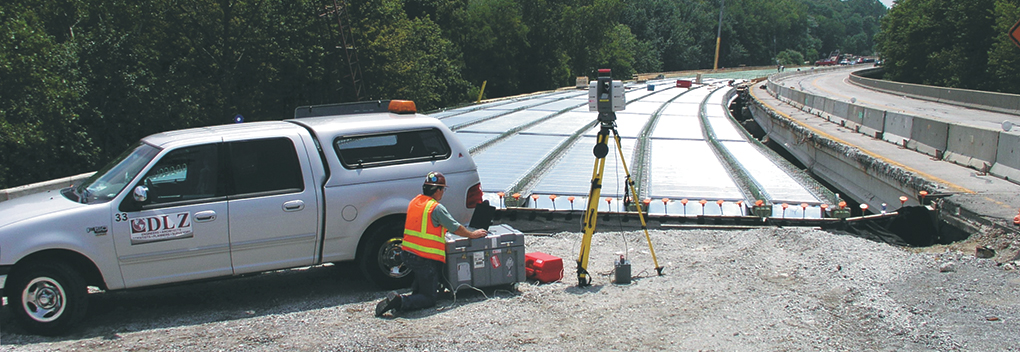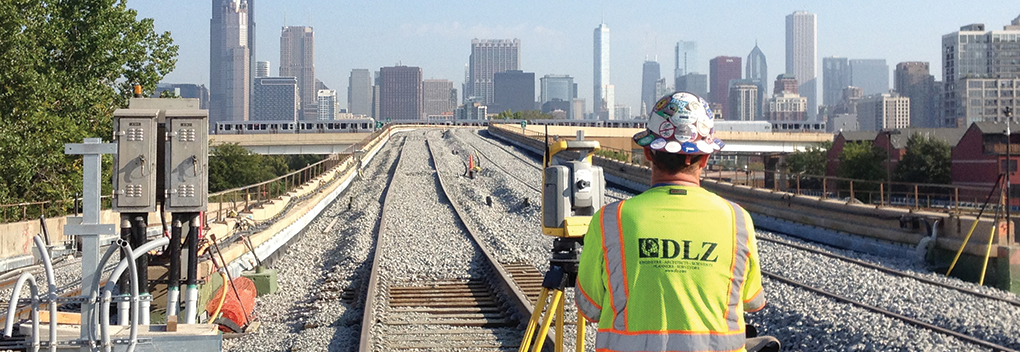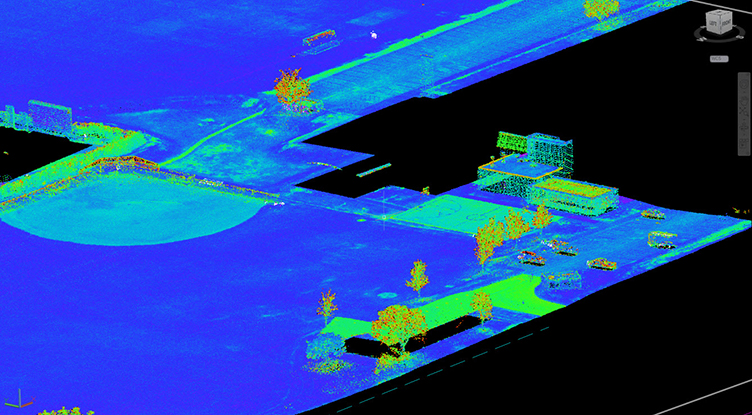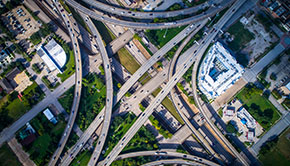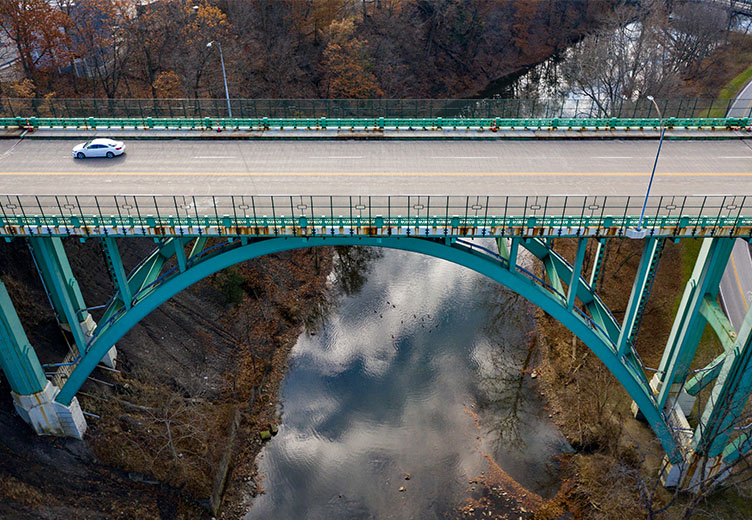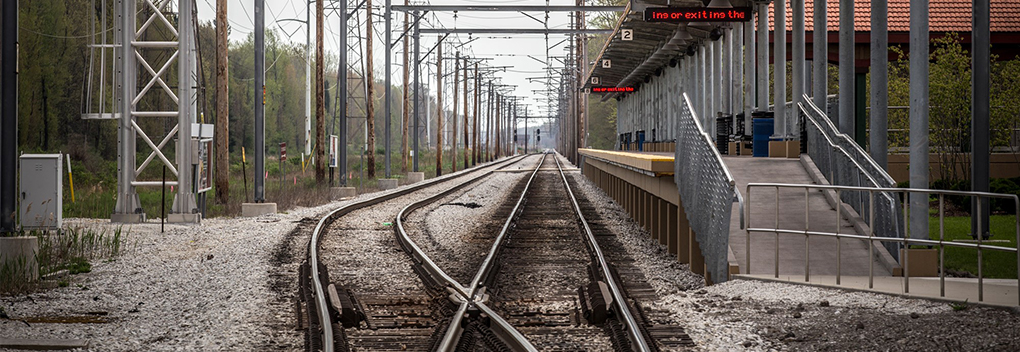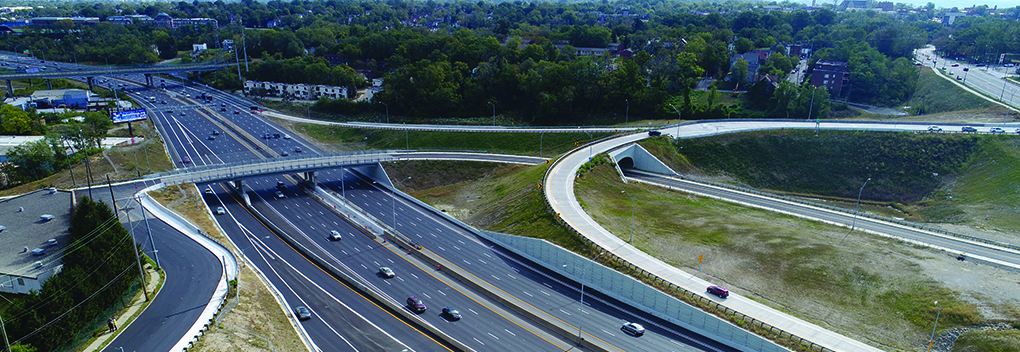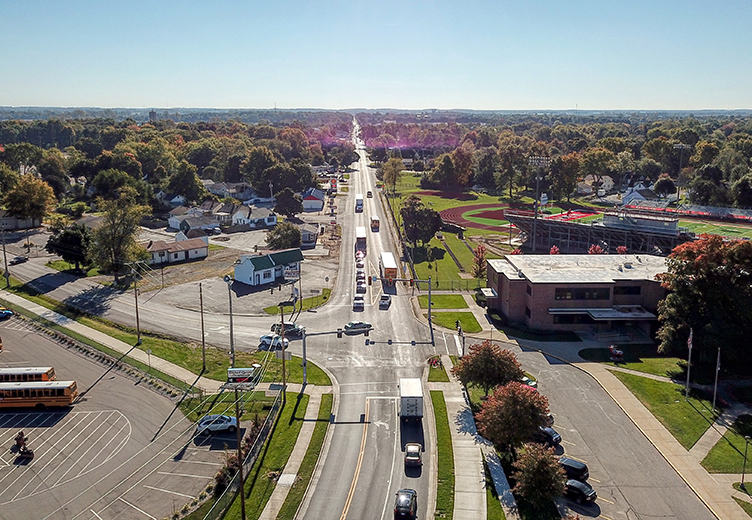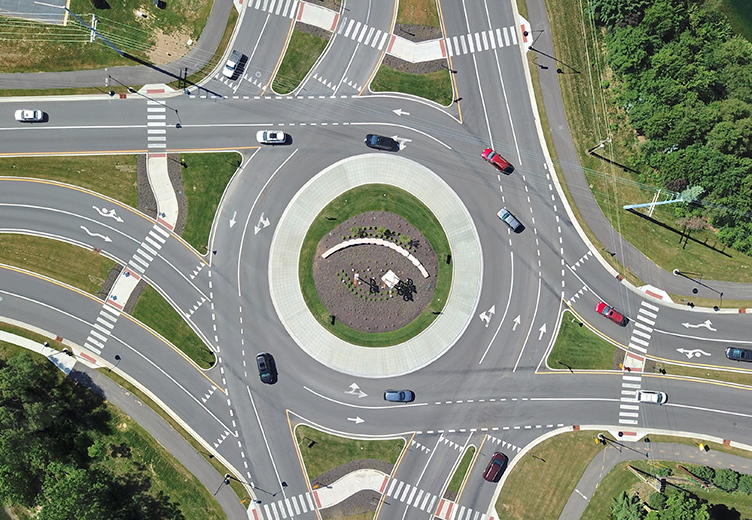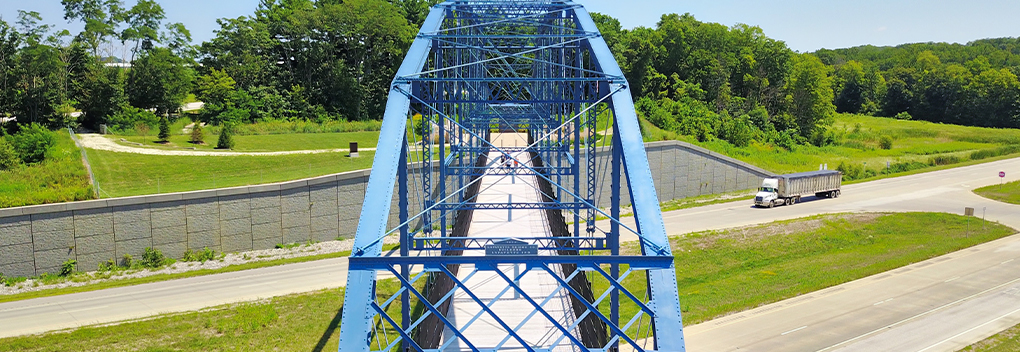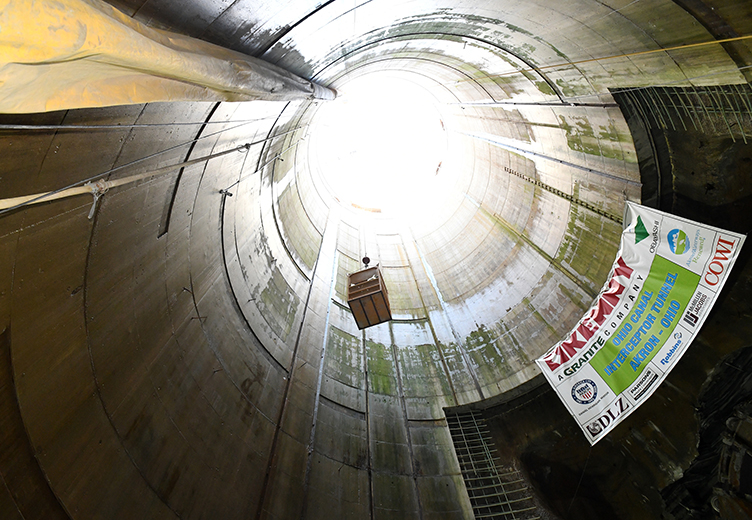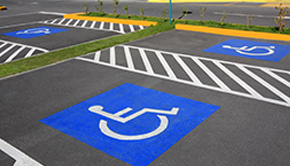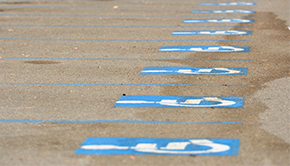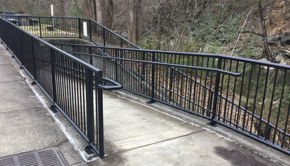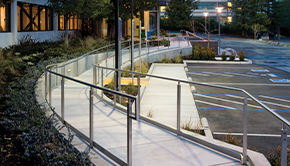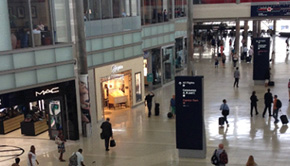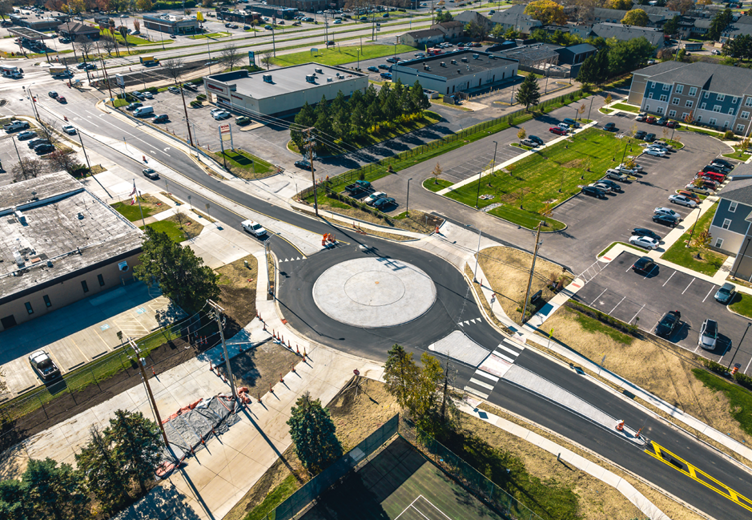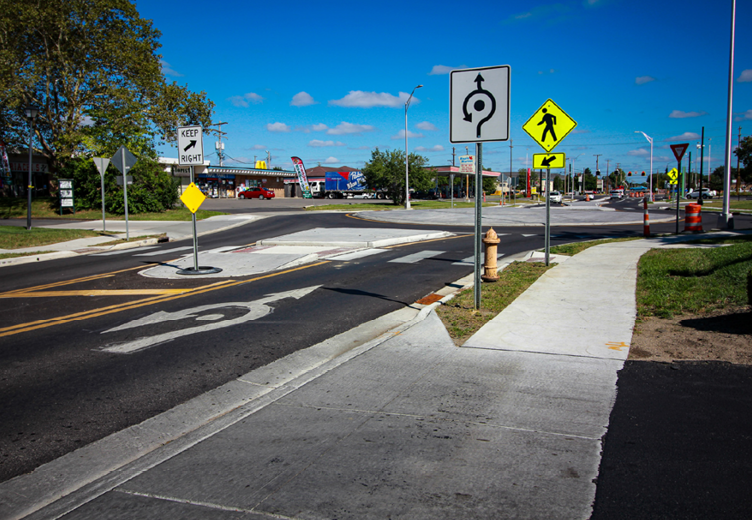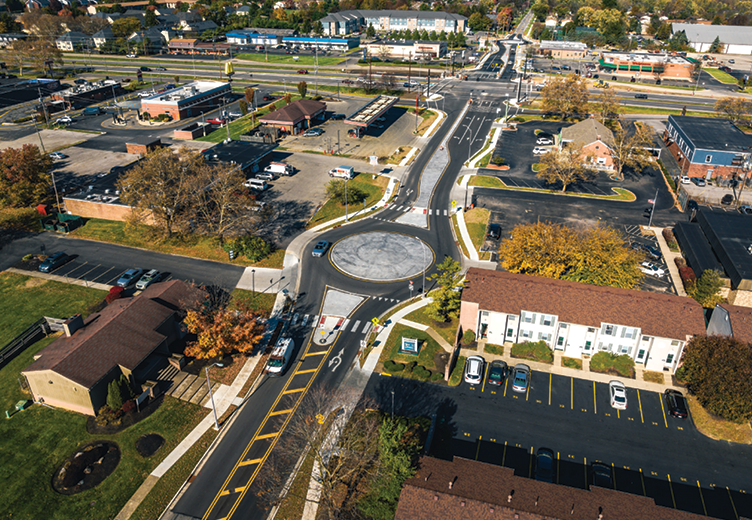SR 161 at Maple Canyon Avenue
History
SR 161 was widened and improved to its current configuration in the 1970s. The improvements used then state-of-the-art ideas in access management, including service roads adjacent to mainline SR 161. The service road intersections along were too close to the main intersections on SR 161 being separated by only 60-70’ causing congestion and safety issues. This distance is far short of the 300’ separation recommended by the National Cooperative Highway Research Program.
The configuration of a pair of closely spaced intersections to SR 161 created 96 vehicular and 40 pedestrian conflict points for each intersection. As traffic increased some of the service road intersections with side streets near signalized intersections became high crash locations.
161 Study
The preferred long-term alternative was to maintain two-way operation on the service roads with medians on the side streets and mini roundabouts. The current project will install four mini-roundabouts with the Maple Canyon Avenue intersections being selected first due to the fact it ranked No. 3 on the MORPC yearly “Top 40 Regional High Crash Locations” list.
Why Mini Roundabouts?
Using traditional roundabout designs would result in significant property impacts and total take parcels. The city supported the idea of investigating the use of mini roundabouts for the locations on the project; the first mini roundabouts in the City of Columbus. DLZ evaluated the geometrics of mini roundabout ranging from 70’ ICD (inscribed circle diameter) to 100’. Based on these configurations to balance traffic operations with minimal property impact, the city selected a 90’ ICD for the final design.
Ultimate Vision for the 161 Corridor
The city plans to implement similar mini roundabout solutions used on this project at each of the eight sets of intersections along SR 161, for a total of 16.
Benefits to the Public
- Mini roundabouts will improve safety in one of the highest crash locations in Columbus and ranked #3 in the region
- Provide a new shared use path with a new bus shelter
- Improve mobility with new ADA-compliant walks and curb ramps
- Provided access management solutions
- Storm sewer improvements
- Water works improvements
- BMPs to detain and improve the water quality of stormwater
- Street lighting to improve visibility and safety
- Install a new traffic signal
- Restrict left turn movements to eliminate conflict points
Complexity
- Maintaining traffic in an urban environment, including numerous side streets and driveways, throughout the construction
- Driver Education of the first mini roundabout in Columbus
- Combining all these design features into the limited RW along the corridor
- Tested and provided mini roundabout geometric design for fire trucks and other large vehicles
Innovation and Unique Features
- First use of a mini roundabout in Columbus
- Mini roundabouts greatly reduced RW impacts
- To accommodate the needs of a Columbus fire station and provide a depressed median (only 1” high) with stamped concrete to allow emergency vehicles to turn left toward SR 161 across the median
- “DON’T BLOCK THE BOX” intersection pavement markings
- Provided a bullnose design for the splitter island to make the corners mountable for larger vehicles
Aesthetic and Sustainable Features
- Provides a shared use path to connect to the SR 161 shared use path corridor being constructed
- Gray stamped concrete splitter islands/medians and center circle, which will be duplicated throughout the corridor
- Green infrastructure-Silva cells and bioretention cells
- Oversized storm pipes with orifice plates to reduce runoff
- Roundabouts reduce emissions
Award Winning
In May 2024, the project won the ASHE – Central Ohio’s under $10 Million award.

